Being Turned Off: An Un_Timely Lab
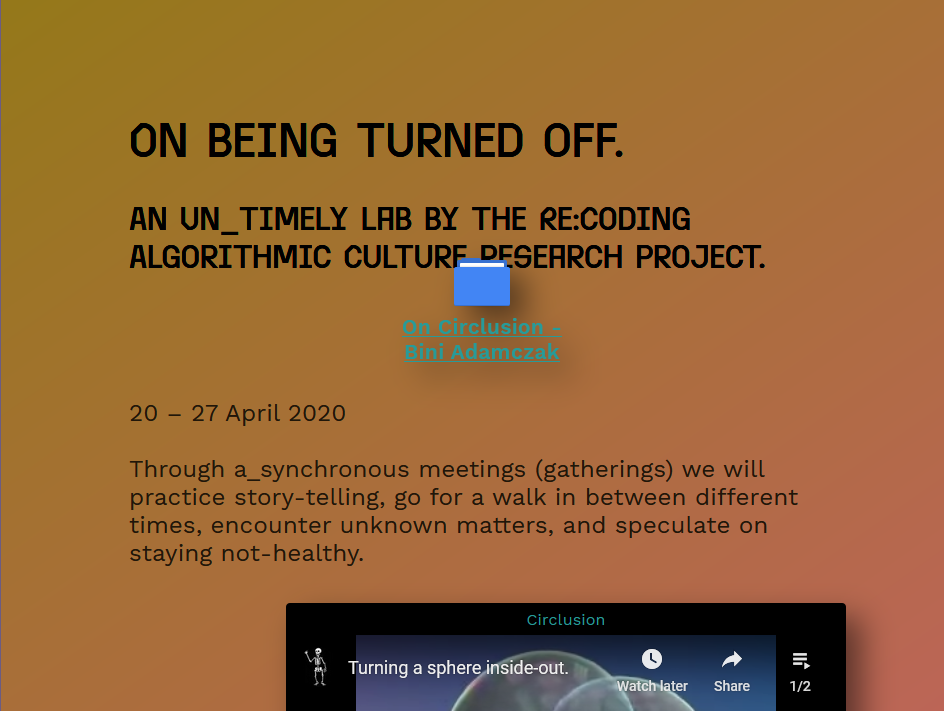 r-calc.net/beingturnedoff [screenshot]
r-calc.net/beingturnedoff [screenshot]
On Being Turned Off ran from April 20 - 27, 2020. Both the Kunsthochschule and University of Kassel, where our research group was based, closed down on March 18, 2020 due to the COVID-19 pandemic. So when we started preparing the lab in March, we already knew that it would take place online only. We had already been using online communication platforms such as Discord and Jitsi (Zoom did not yet dominate academia) for organizing our project, and we knew the various frustrations of online formats. When many events started to move online at that time, we often experienced a disregard by the events' organizers for what this shift means for the bodies sitting in front of the screens (in terms of privacy, access and in terms of a complete lack of crip sensibility for just how exhausting it is to continuously stare at a screen for long spans of time with too few or no breaks). So we approached our lab with a focus on different modes of engagement – in terms of time span, demand of attention and communication speed: we wanted our lab to take place along different temporalities.
We developed a one page website for which we chose texts, videos, images and sounds to be displayed at different times during the lab week. Many of the included works dealt with concepts of time, touch, and the ableisms embedded in the idea of "staying healthy". Throughout the week the materials were repeated and reshuffled and we also organized three 2 hour-long chat meetups. Participants could join anonymously via an embedded chat interface while we as facilitators would take on different roles: We staged materials live on the website while people were watching, other times we structured the chat with messages prepared in advance according to a specific choreography.
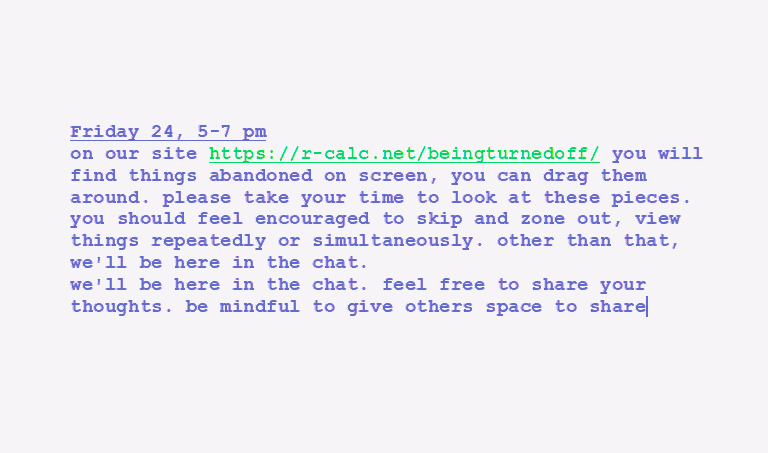 Excerpt from the chat facilitation for our live meetup on April 24
Excerpt from the chat facilitation for our live meetup on April 24
The following is a reflection of this lab, written five months after the fact. Each of us three came up with questions we wanted to ask each other, then we took turns answering.
Say something about difficulties during the process of developing and building the Un_Timely Lab.
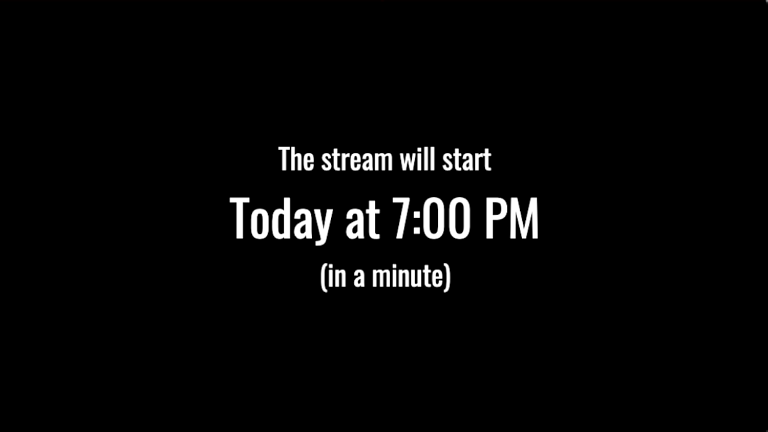 The lab meetup of April 22, 2020 was staged via a twitch.tv livestream [screenshot]
The lab meetup of April 22, 2020 was staged via a twitch.tv livestream [screenshot]
I remember our work process as harmonious – despite the fact that it was a massive amount of work and stress in a very short amount of time for cooking up an event that spanned an entire week. Our Discord server documents a four week preparation period. There simply was no time for conflicts while we prepared and the staged the laboratory. In retrospect there were many moments of friction where we should have taken the time to take a step back and listen to each others needs and imaginations. But I also need to say that I am super proud of what we did, this project is one of the most beautiful and precise things I have ever done.
Certainly one of the most demanding conditions of our collective process was that it took place in an institutional situation intensely structured by hierarchies, where individual work conditions differed dramatically with regard to precarity or security: three people worked collectively in an externally funded research project, with two of them each employed through an 18 month contract on a 25% position of 'künstlerische Mitarbeiter*innen' (artistic associate), and the third a Professor with a Beamtin (civil servant) contract for life.
Plus, we had decided on an interactive, choreographed webpage, but only one of us is versed in coding for web. So this was another massive asymmetry, also with regard to different kinds of emotional labor, with one person carrying the burden of responsibility for creating the structure, and doing so in time, and the other two managing feelings of guilt and staging hectic or tired efforts to compensate or ignore this asymmetry. In many regards, more time and space would have been necessary for translations between different needs, practices, and knowledges.
If you look back, what did you like most about our lab? And what did you find most challenging?
For me, most challenging was what we called chat facilitation. I remember every one of us was curious to investigate what a chat space could be for the lab meetups. I myself was interested in this feeling of presence, like the little indicator at the bottom of the chat window saying "there are 10 people in this space with you." Maybe this is also what I liked most about our lab: this somewhat awkward but also tranquil moment of being together. But then, what to do with all those uncertainties of the chat format – that was the difficult part.
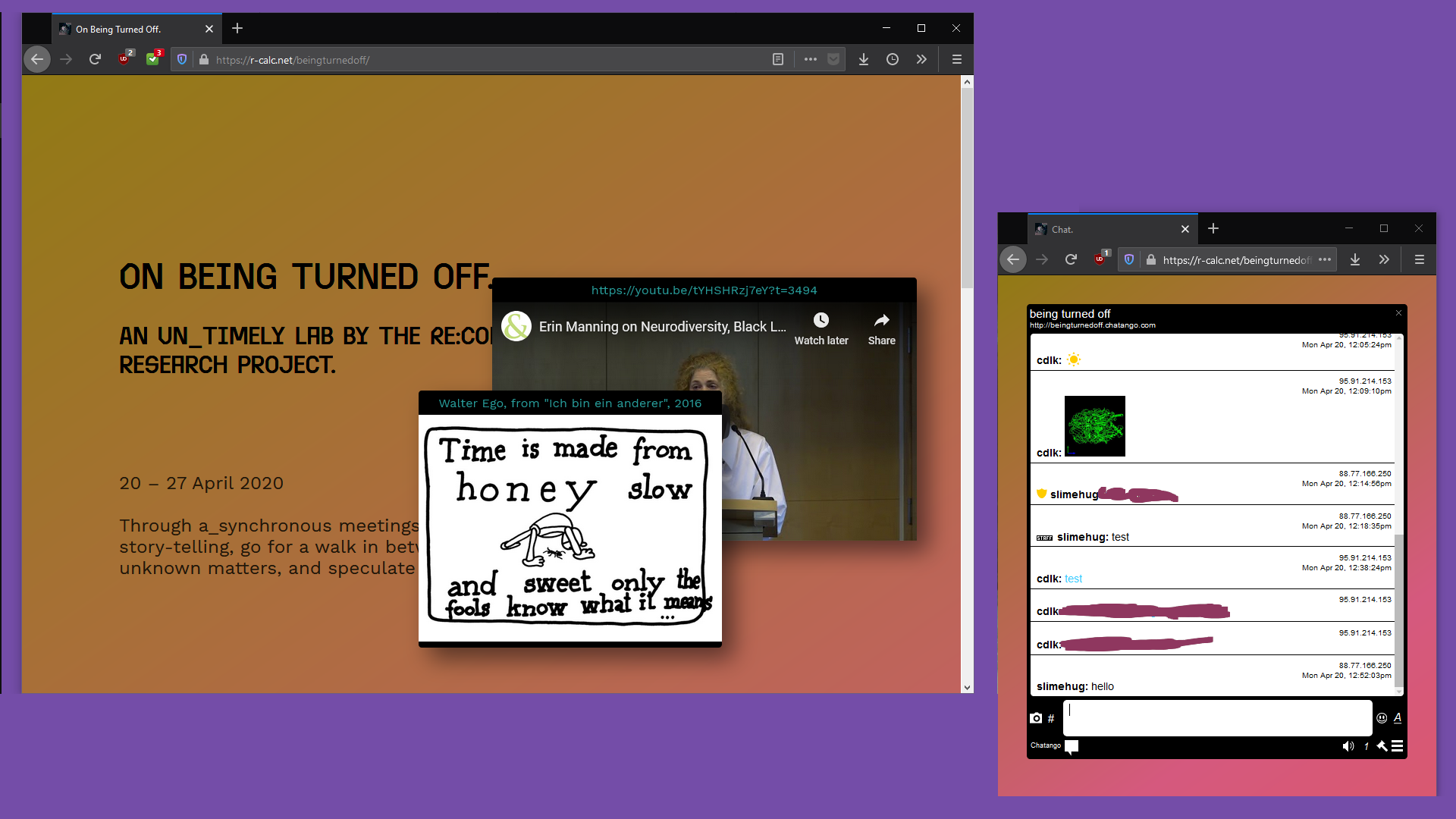 Our three meetups were facilitated via a chat interface meant to be opened right next to the lab website [sceenshot]
Our three meetups were facilitated via a chat interface meant to be opened right next to the lab website [sceenshot]
I would say the same, the most challenging aspect in our lab was the chat facilitation, that was a tough learning experience. As a facilitator with lots of experience in physical spaces I underestimated how chat rooms have their own conventions which shape their conversations. In other words, you cannot facilitate in contexts if you do not know the communication conventions. That was a serious case of academic over-estimation on my part. No one would think of facilitating a university event if they have no idea about uni contexts.
Hmm... what you are saying makes me go back to something we talked about during our preparation: how in this huge online-shift institutions started to use spaces in a certain way. They claimed these spaces as if they belonged to them and they can behave in whatever way they want in them -- as if these spaces had not existed before. Art reviewers ‚discovered' games since you can play them online, unlike visiting exhibitions, and they started to write game reviews of popular games. The subnote and also the explicit tone of these reviews would be that games are much cooler than contemporary art. How can they speak of games as if they are one entity? Video Games have had diverse communities since at least the 1980s.
I think what we did was very lecture-performance-like with a space for interactivity. We developed our own method of doing the lab, and this was of course challenging. We could have also used the academic Zoom-method, which would have been super safe in terms of being able to control everything and minimizing chances for unexpected things to happen. But we were all not interested in that. With our method we also managed to come up with something other than the usual frontal, self-image-based form of conversation and its ableism. Since critiquing ableisms was one of our main focuses, we also included a video lecture excerpt of Erin Manning explaining her methods of organizing a classroom space in a non-normative way. However, the facilitating or the feeling of being a facilitator was hard for me, and I found it especially hard to lead the conversations into a specific direction. But I very much liked our method of posting one picture or text in the chat as small input once in a while and giving space for conversations to develop.
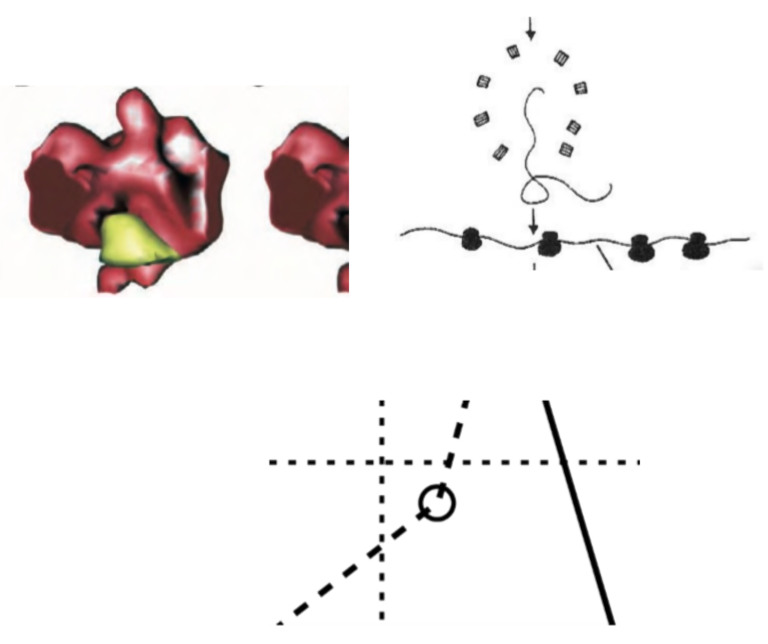 Visual excerpt from the livestream performance
Visual excerpt from the livestream performance
Looking back what we did really feels like an experiment with digital forms. Throwing somewhat weird things together, tweaking and seeing what resonates with people in an attempt to invent something other than the usual, very normative mapping of physical learning spaces into digital realities. But I wonder how much of this came across at the other end of the screen, for the people that were with us in the chat. I still got the feeling that some people were just totally overwhelmed by what was going on (myself included, sometimes), even though we did try to encourage everyone to take their time. So what is the result of our ‚experiment', where would we go from here? Especially since we have witnessed the normalization of Zoom as this catch-all environment with its own ruleset emerging – such as everyone always having their camera on. This is very weird for me as someone who has been using VoIP, Voice over Internet Protocol, also called Internet telephony, in various forms since 2007 *grinning-blob-emoji*...
I think if we had had more time for expanding the three meetings and stretching the time between them out over one and a half months for example, that would have made the untimely effect stronger. In academic contexts I often feel that the theories that are discussed are not really convincing in practice, even though they are well thought out. Maybe because of limits – limited time, limited money, limited dedications and so on. In our lab I see tendencies to get to somewhere else but I also see the existing limitations that didn't wholly allow for this getting elsewhere.
Why are we using the term 'lab' for a description of the events that we organize for the research project? What does the usage of lab mean when moving these events online?
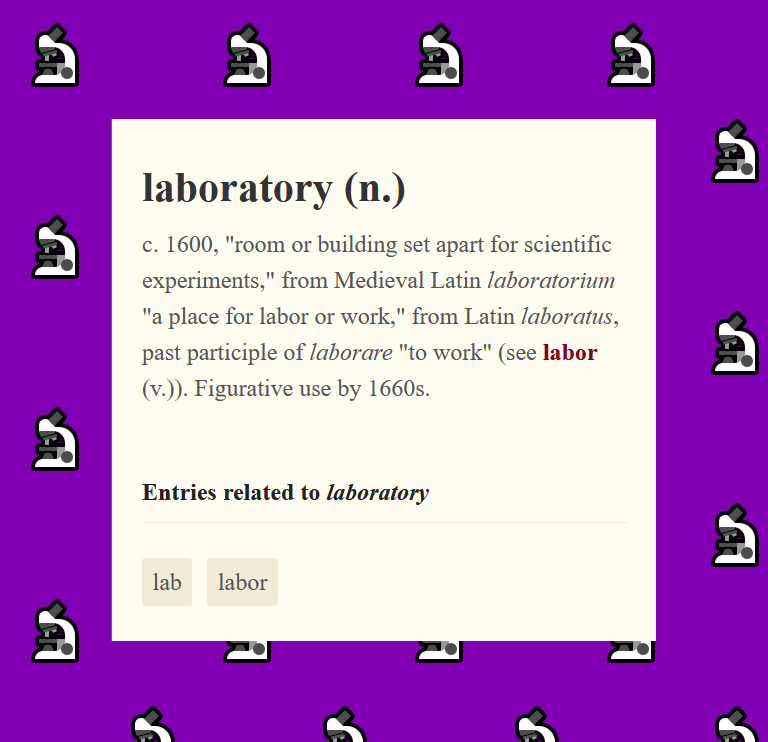 https://www.etymonline.com/word/laboratory, visited August 25, 2020 [collaged screenshot]
https://www.etymonline.com/word/laboratory, visited August 25, 2020 [collaged screenshot]
The term 'lab' tastes of contexts of experimentation, where people come together and try things out - and also where participants might feel invited to actively engage in experimentation versus passively consuming. But there might be a dimension of kitsch involved our use of the term. By this I mean that 'laboratory' also has a connotation of serious scientific research: natural sciences, hard facts, objective truths, and this is simply not at all what our practice is about. So, this usage of the term needs to have an ironic footnote for people like us coming from arts and design based research; and even more so if these people have a queer- and trans*feminist, decolonial and anti-ableist perspective, since we all embrace the understanding that knowledge is situated, and participate in the problematization of universal truth claims and of demands for a general objectivity.
I like the term lab very much. Lab to me sounds like a place where everyone can join and do stuff. I was a chemistry fan when I was younger and I loved playing with those small tubes and such. So to me the term is above all connected with trying things out. But when it is used in art contexts, it forges a relation to the sciences, and although using the term might be a good strategy for getting funding, often times those two different contexts really don't fit together at all.
I really find it interesting that in the laboratory definition above it says "room or building set apart for scientific experiments", and with regard to our lab, we are actually talking about a webpage. Using 'lab' creates this *skeuomorphic* quality. Skeuomorphism is a design concept I know from the first iPhone interfaces or also from Windows Media Player themes. It is the idea to make an abstract thing like an app resemble some real-world counterpart in order to make it more approachable for the user – like when media player apps copied button layouts and the scrubbing function from old tape players. Or like when you call the Zoom interface and infrastructure a "digital classroom".
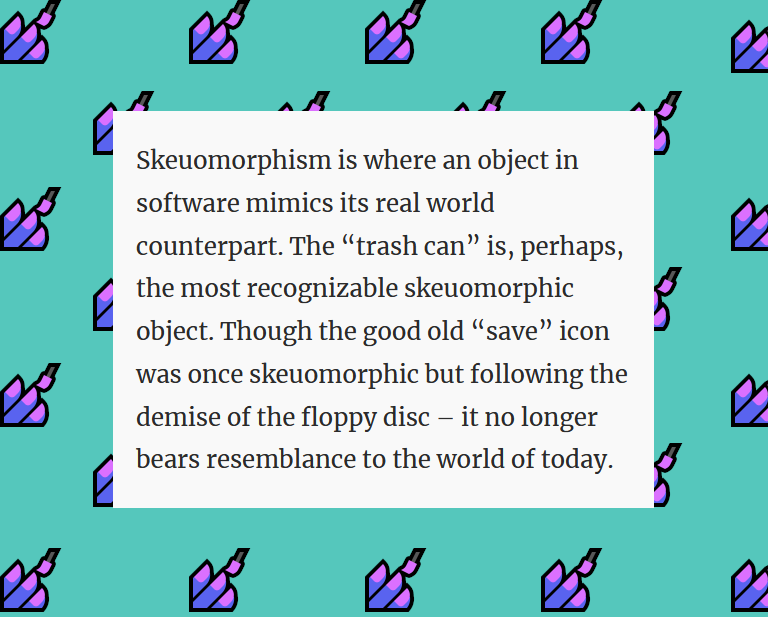 https://www.interaction-design.org/literature/article/skeuomorphism-is-dead-long-live-skeuomorphism, visited August 25, 2020 [screenshot]
https://www.interaction-design.org/literature/article/skeuomorphism-is-dead-long-live-skeuomorphism, visited August 25, 2020 [screenshot]
This also makes me wonder, how did the design of our lab page come about? The page has elements which one can drag around and it functions like a minature desktop inside one's actual desktop (so perhaps this is a form of 'meta-skeuomorphism'). Here's another quote from that Skeuomorphism page: "That trash can lets users drag stuff they didn't want on their computers to an actual bin. You could move files to folders (another real life equivalent)." And then it mentions 'affordance', a term which refers to what an object communicates to you that you can do with it. On our page there were these draggable objects but there was nothing telling you what you had to do, so you were free to move around. I like that actually, maybe it could even have gone a bit further. Time or better the aspect of untimeliness relates to this too, I think.
What is the significance of "different times" and "a_synchronicity"?
We created a structure of presentation where different elements followed different temporal logics, or even, where participants could determine their own viewing and reading pace. When Persson Perry Baumgartinger taught at the Kunsthochschule Kassel, he said that in his experience slowing down is the most useful tool for creating anti-ableist learning spaces. During the lab I myself became very aware of the existence of different needs with regard to taking one's time or enjoying being speedy, and how these different temporal needs are quite violently denied by a uniform understanding of time and its enormously exclusionary potential. So we slowed down. I myself am a fast reader, I talk and type fast, so for slowing down during the chat sessions, I started to sit on my hands and I bit on my tongue, quite painful at times.
Can you talk a bit about how and why you quoted / staged / repeated other people's work during the lab.
I will actually shift your question onto another focus, one that we intensely discussed during our preparation: the question of if and how we would pay people for using their work. There was no money for this kind of expense, since the terms of our Volkswagen Stiftung grant did not allow for paying honorary fees. We had to scrounge that money from elsewhere. So, our decision was that work already online on large platforms can be quoted or referenced but work given to us via permission by artists had to be compensated with at least a symbolic amount of money.
This was a central point during the preparations, our discussions around quoting, embedding, crediting and honorarium. But I would say that it was a lot more fuzzy than you're writing. The budget we had for external contributions to this lab was just 200 - 300 € in total, in my opinion too little to cover multiple honorary fees. I still believe it was great that we tried to feature other work and pay at least a symbolic amount of money. Nevertheless it continues to be a sore point for me that we did not have more time to discuss and communicate our decisions on screening fees. As someone who has worked in many festival context both on the side of the organizer and the side of the contributor, this is unfortunately something I am quite familiar with.
I would also add that at least there are screening fees for artists whereas there is no such thing as a screening fee for academic texts. Imagine what this means, materially, for freelance theorists who work under precarious working conditions. So, for our discussion around reimbursing authors for staging or quoting their work I found the question ‚is this an academic or an artist?' irrelevant. I tried to find out instead if the person whose work we wanted to include has a job that gives them a regular income, or if a particular work was produced under fair working conditions.
I think this is a good point, to consider the circumstances under which the work was produced. I also ask these kinds of questions in the field of music or any other kind of art form. For me, it is important to ask if a work was produced by a person in a more privileged position. At this point I want to talk about open access rather than discussing personal credits in terms of either money or referencing the author. The latter direction means to defend copyrights and I disagree with that at this point. Also, artist/screening fees are almost non-existent usually, if you are not very successful already. As with academic quoting conventions, getting screened mostly just means cultural capital which enables exploitation. It feels weird to be in that position of the organizer, but I think it was quite OK what we did considering our minimal budget.
We hosted our lab at the beginning of a pandemic, now we are probably more in the middle of it. I think we picked up some essential issues such as questions around what it means to "stay healthy" (or not). What would you do differently if we developed the workshop now, what has changed meanwhile (if at all)?
Back in April I got the feeling that our lab participants valued this collective coming together right at a moment where lots of uncertainties were looming. But over the months I felt a sort of online-attrition set in and I wonder if people now would just feel exhausted by another chat interface and another online meetup. But to answer the first question, I probably would not have made it an online event at all. Maybe rather an invitation to not stare at a laptop-screen for 10 hours and go somewhere else instead.
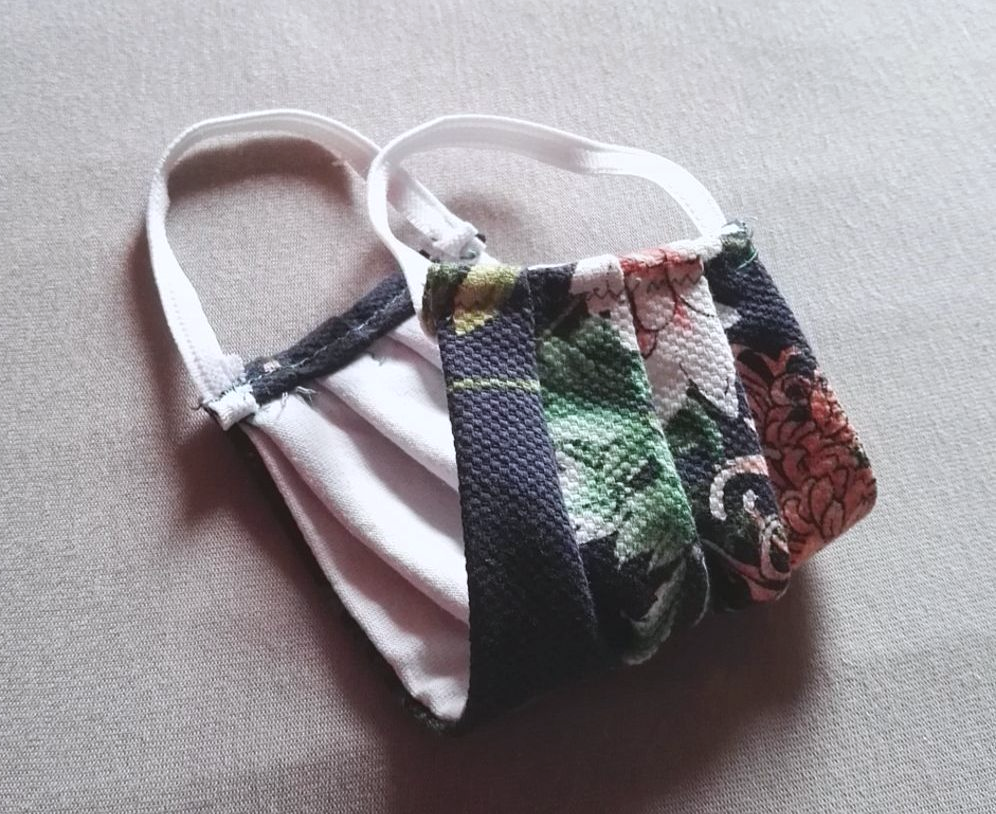 One of the items collected as material to be staged during the five days the lab took place [photo]
One of the items collected as material to be staged during the five days the lab took place [photo]
One of the things we picked up was that everywhere this phrase of 'stay healthy/bleib gesund' cropped up. And I remember one moment on an activist mailing list where someone rebutted: „Just shut up, I am not healthy, I have a chronic disease so consider the emotional effects of your ableist thoughtlessness." Another important impulse for me was to invent something for people to have a sense of togetherness, at least for a short moment in time. And we chose to include Jonathan Richman's I was am dancing in the Lesbian Bar - also as a bittersweet reminder that a lot of queer spaces were hit the hardest with regard to economic survival.
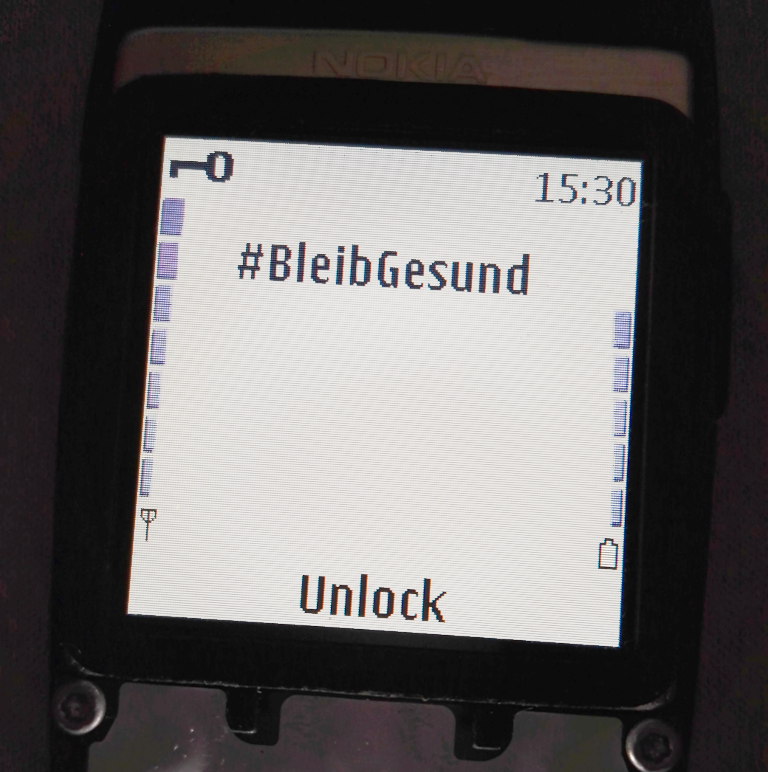 ‘#BleibGesund’: ‘#StayHealthy’. Vodafone Germany’s carrier message on a Nokia 6320i mobile phone. [photo]
‘#BleibGesund’: ‘#StayHealthy’. Vodafone Germany’s carrier message on a Nokia 6320i mobile phone. [photo]
I was thinking about what you both were writing about online spaces. I am a person who likes to meet online. I have no problem with that. And even I would not like to do a workshop online now. My impression is a canon emerged from these online meetings, and that is not something I am enthusiastic about anymore. For a short time I thought that I can join online events all over the world. So I joined a few workshops in London. I felt quite uncomfortable, almost like an alien. I didn't understand the language and also not the context of the people who were first language English speakers. So an online workshop is not a utopia, but like any other space it is shaped by existing structures of domination, and you have to discuss how this is so specifically and what to do about it, specifically.

On Being Turned Off. An Un_Timely Lab was developed and staged by Ipek Burçak, Nicole spiders and Johanna Schaffer. Many thanks to Loren Britton and Isabel Paehr for their help with editing and suggestions for this text.
The one-week-online-event staged the following works, objects, texts, files:
- Romily Alice Walden, Notes From The Underlands, 2019
- Walter Ego, „Time is made from honey slow and sweet only the fools know what it means ...", from Walter Ego, Ich bin ein anderer, bahoe books, o.O.: 2016, S. 58
- Jonathan Richman, I was dancing in a lesbian bar
- Jeremy Howard, Why We Need #Masks4All and How You Do Your Own Mask
- 10 Minutes of Your Life: Watching Palm Trees Against The Wind
- 9:69, 360 degree video by Vi Hart, 2015
- Planningtorock 'Much To Touch' feat. Maija Karhunen, 2019
- Erin Manning on Neurodiversity, Black Life and the University as We Know It, 2018
- Mask video, recorded for this lab by Nicole spiders
- Photo of a diy-made face mask with a floral pattern on the front side
- Mp3 audio recording of a sewing machine ("I've recorded a few sounds"), captured via a piezo contact microphone
- Nadja Porsch's document "Textile information"
- Bini Adamczak, On Circlusion, published in Mask Magazine, #30, July 2016, as translated by Sophie Lewis
- Ipek Burçak's video performance "Taking a Walk on a Big Sheet of Speculated Forms"
Some of the images on this page include/quote Mutant Standard emoji, which are licensed under a Creative Commons Attribution-NonCommercial-ShareAlike 4.0 International License
![A mess of programming code. Some dates and timespans can be made out, as well as references to a plethora of links, files and youtube-videos. Here is an example: “['1', '0','0', '23','58', 'embed', 'Walter Ego, from "Ich bin ein anderer", 2016', '']”](/img/being-turned-off-code.png) Javascript code from the lab page. This is an array that lists all the different links and materials that were shown and at what time exactly they were to be displayed on the page [screenshot]
Javascript code from the lab page. This is an array that lists all the different links and materials that were shown and at what time exactly they were to be displayed on the page [screenshot]